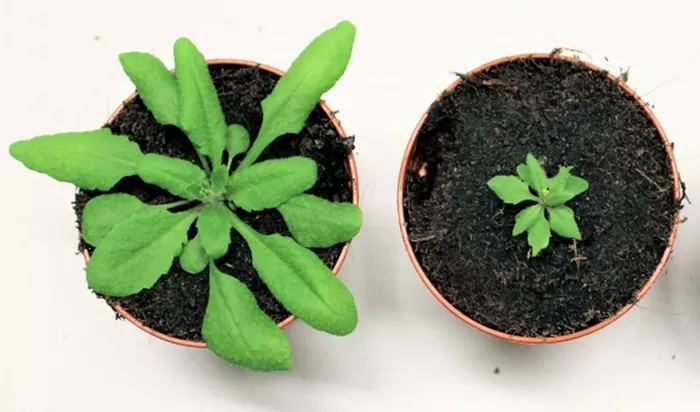Study Reveals Protein Production Monitoring in Plants.
A recent study by a research team from Martin Luther University Halle-Wittenberg (MLU) has revealed that plants possess a sophisticated mechanism for ensuring the proper production of new proteins. This mechanism involves the U1 small nuclear ribonucleoprotein (snRNP) complex, which plays a crucial role in completing the protein blueprints. Previously, this type of quality control, known as telescripting, was thought to exist only in animal cells. The findings of the study were published in Nature Plants.
Importance of Proteins in Plant Function
Proteins are vital for the functioning of plant cells. They regulate essential processes such as growth and metabolism. The instructions for creating these proteins are encoded in the plant’s genetic material, specifically within its genes.
“The information is encoded, and the genes need to be read and transcribed from DNA into RNA. These RNA molecules serve as blueprints for proteins, providing step-by-step assembly instructions,” explains Professor Sascha Laubinger, a plant geneticist at MLU.
The Role of RNA and Spliceosomes
The MLU research team aimed to understand how plants ensure accurate production of these blueprints. RNA contains both necessary and unnecessary sections. The unnecessary parts must be identified and removed beforehand, a process carried out by a spliceosome that also combines the relevant gene information, according to Laubinger.
Errors in this process can lead to defective proteins. Minor changes to RNA can have significant consequences. Additionally, genes have multiple points where the transcription process can unintentionally stop.
Discovery of Telescripting in Plants
Approximately a decade ago, researchers identified a mechanism in animals that maintains continuous transcription of DNA to RNA, referred to as telescripting.
“The U1 snRNP complex has a dual function: as part of the spliceosome, it ensures that the relevant gene information is accurately spliced together. It also guarantees that the transcription process is fully completed. This second function is known as telescripting,” Laubinger explains. Until now, it was unclear whether plants also utilized this mechanism.
Experimental Findings Using Arabidopsis thaliana
To investigate this hypothesis, the researchers conducted experiments using the model plant Arabidopsis thaliana. They engineered plants in the laboratory with reduced levels of U1 snRNP molecules, achieving a concentration of around 10% of the normal amount. “Any lower concentration would render the plant non-viable,” says Laubinger.
Visually, the modified plants displayed notable differences compared to their normal counterparts: they were significantly smaller, and their leaves were stunted. The researchers analyzed gene activity in these plants, searching for shortened RNA snippets that indicated premature transcription halting.
The team discovered several hundred instances of such fragments. “We were surprised to find so many RNA fragments. Since Arabidopsis thaliana has relatively short genes, we expected the influence of the U1 snRNP complex on transcription to be minimal. In contrast, other plants, like certain ferns and pines, possess longer genes, meaning the impact could be even more pronounced,” Laubinger explains.
Implications for Climate Resilience in Plants
These findings offer significant insights into controlling gene activity in plants. “We know that telescripting can alter gene activity in human cells under heat stress,” Laubinger states. If a similar mechanism exists in plants, it could potentially enhance their resilience to climate change effects.
Related topics:
- Houseplant Business Thrives After Long Covid Struggles
- Plant Bulbs Now for Beautiful Spring Flowers
- Garden and Plant Festival Provides Stress Relief Amid Vibrant Displays This Weekend


